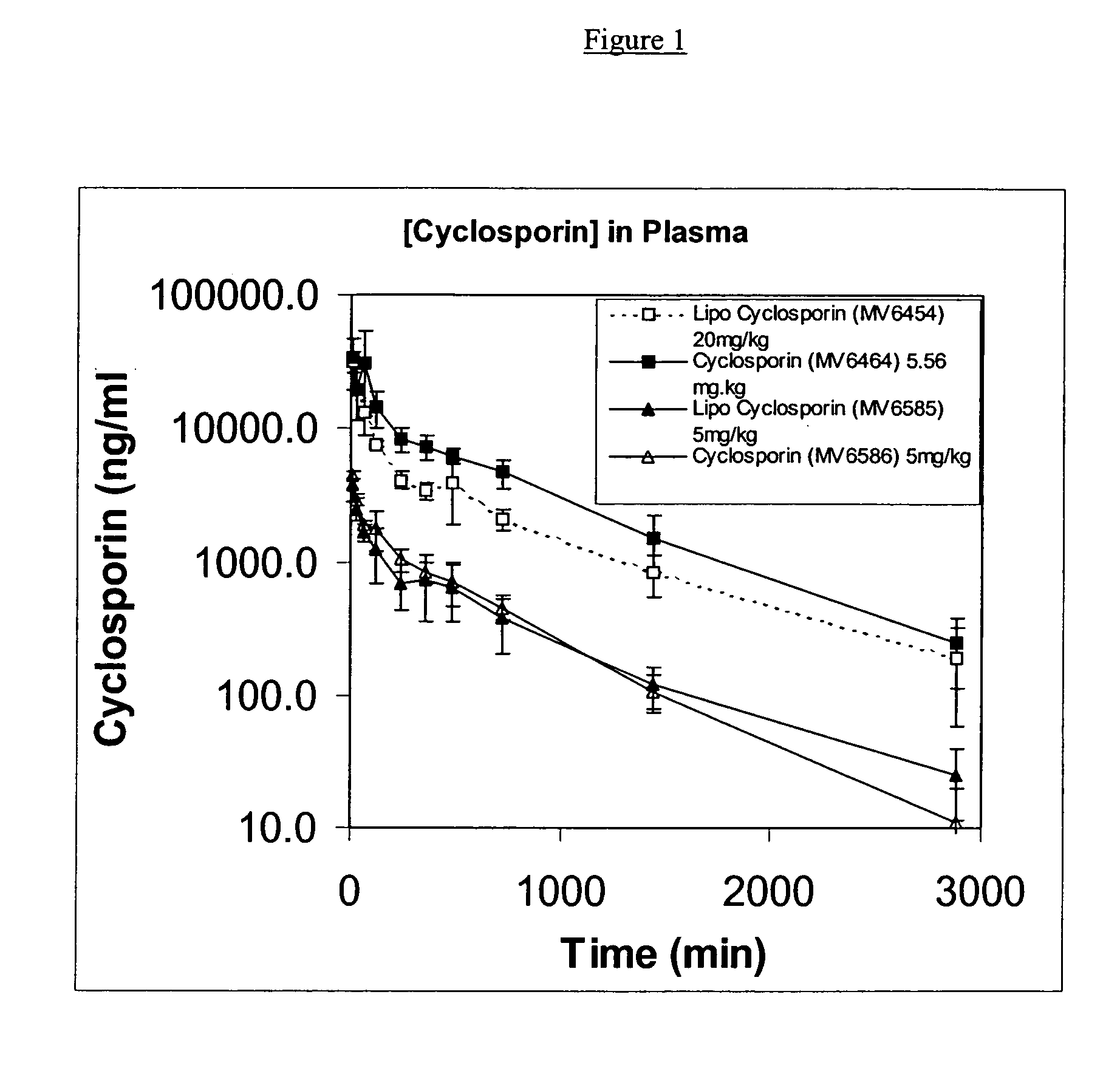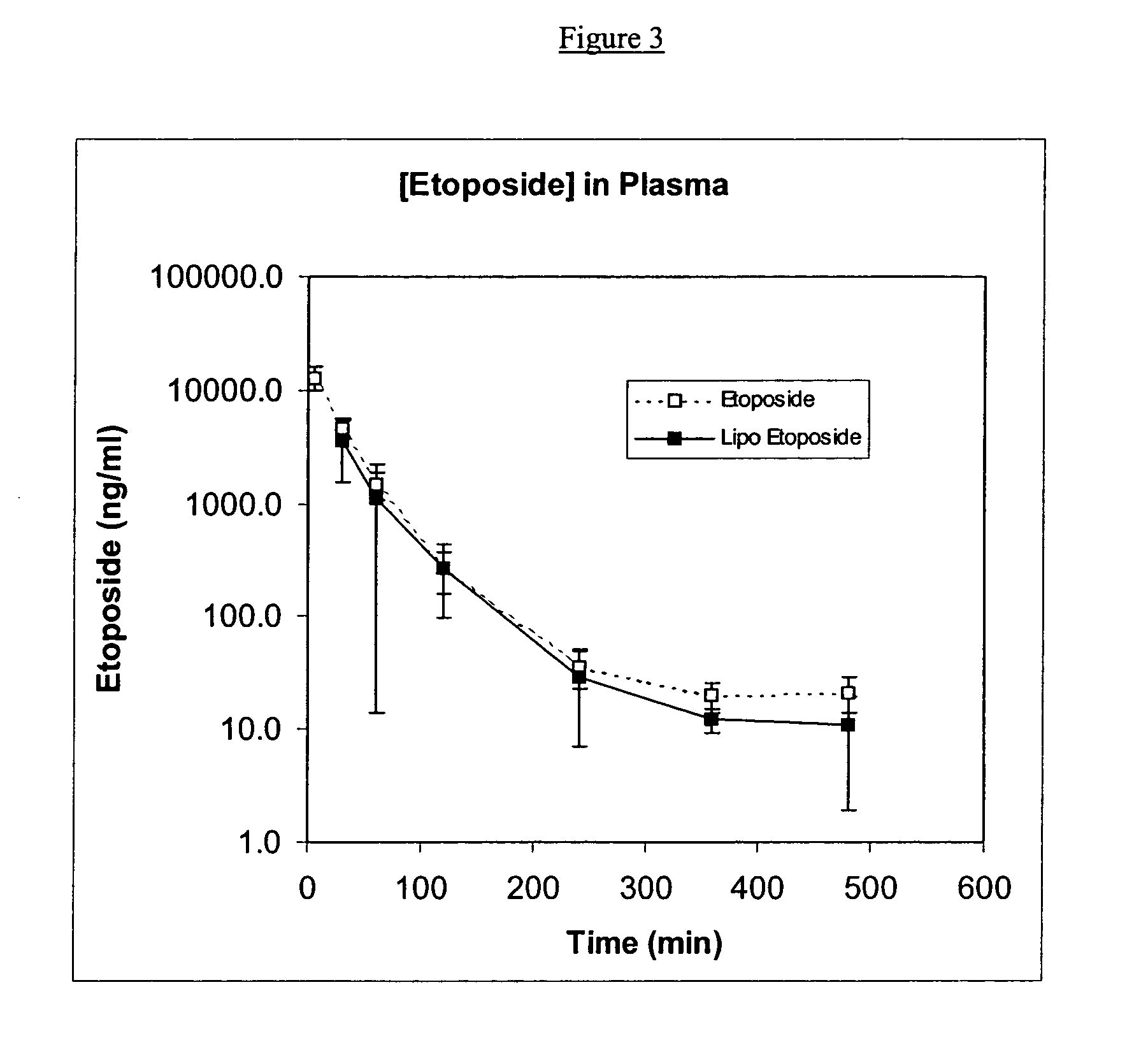Lipid-based dispersions useful for drug delivery
a technology of lipid-based dispersions and drug delivery, which is applied in the direction of antibacterial agents, immunological disorders, extracellular fluid disorders, etc., can solve problems such as not being used to their full potential
- Summary
- Abstract
- Description
- Claims
- Application Information
AI Technical Summary
Benefits of technology
Problems solved by technology
Method used
Image
Examples
example 1
Lipid-based Dispersion of Etoposide
[0111] Soy-PC, DSPG and etoposide were dissolved in a 1:1 (v:v) mixture of methanol and chloroform at a molar ratio of Soy-PC:DSPG of 1:0.2 and a weight ratio of (Soy-PC+DSPG):etoposide of 20:1. Once all components were dissolved, solvents were removed by evaporation under continuous nitrogen flow. Residual solvent was removed by storing the tube containing the material in a desiccator under vacuum for not less than 48 hours. The films were then hydrated in 9% sucrose at desired drug concentrations and sonicated to form liposomes. The resulting solution was filtered through a 0.2-micron filter and evaluated.
example 2
Lipid-based Dispersion of Cyclosporin
[0112] Soy-PC, DSPG and cyclosporin were dissolved in a 1:1 (v:v) mixture of methanol and chloroform at a molar ratio of Soy-PC:DSPG of 2:0.5 and a weight ratio of (Soy-PC+DSPG):cyclosporin of 20:1. Once all components were dissolved, solvents were removed by evaporation under continuous nitrogen flow. Residual solvent was removed by storing the tube containing the material in a desiccator under vacuum for not less than 48 hours. The films were then hydrated in 9% sucrose at desired drug concentrations and sonicated to form liposomes. The resulting solution was filtered through a 0.2-micron filter and evaluated.
example 3
Lipid-based Dispersion of Propofol
[0113] Soy-PC, DSPG and propofol were dissolved in a 1:1 (v:v) mixture of methanol and chloroform at a molar ratio of Soy-PC:DSPG of 1:0.4 and a weight ratio of (Soy-PC+DSPG):propofol of 10:1. Once all components were dissolved, solvents were removed by evaporation under continuous nitrogen flow. Residual solvent was removed by storing the tube containing the material in a desiccator under vacuum for not less than 48 hours. The films were then hydrated in 9% sucrose at desired drug concentrations and sonicated to form liposomes. The resulting solution was filtered through a 0.2-micron filter and evaluated.
PUM
 Login to View More
Login to View More Abstract
Description
Claims
Application Information
 Login to View More
Login to View More - R&D
- Intellectual Property
- Life Sciences
- Materials
- Tech Scout
- Unparalleled Data Quality
- Higher Quality Content
- 60% Fewer Hallucinations
Browse by: Latest US Patents, China's latest patents, Technical Efficacy Thesaurus, Application Domain, Technology Topic, Popular Technical Reports.
© 2025 PatSnap. All rights reserved.Legal|Privacy policy|Modern Slavery Act Transparency Statement|Sitemap|About US| Contact US: help@patsnap.com



